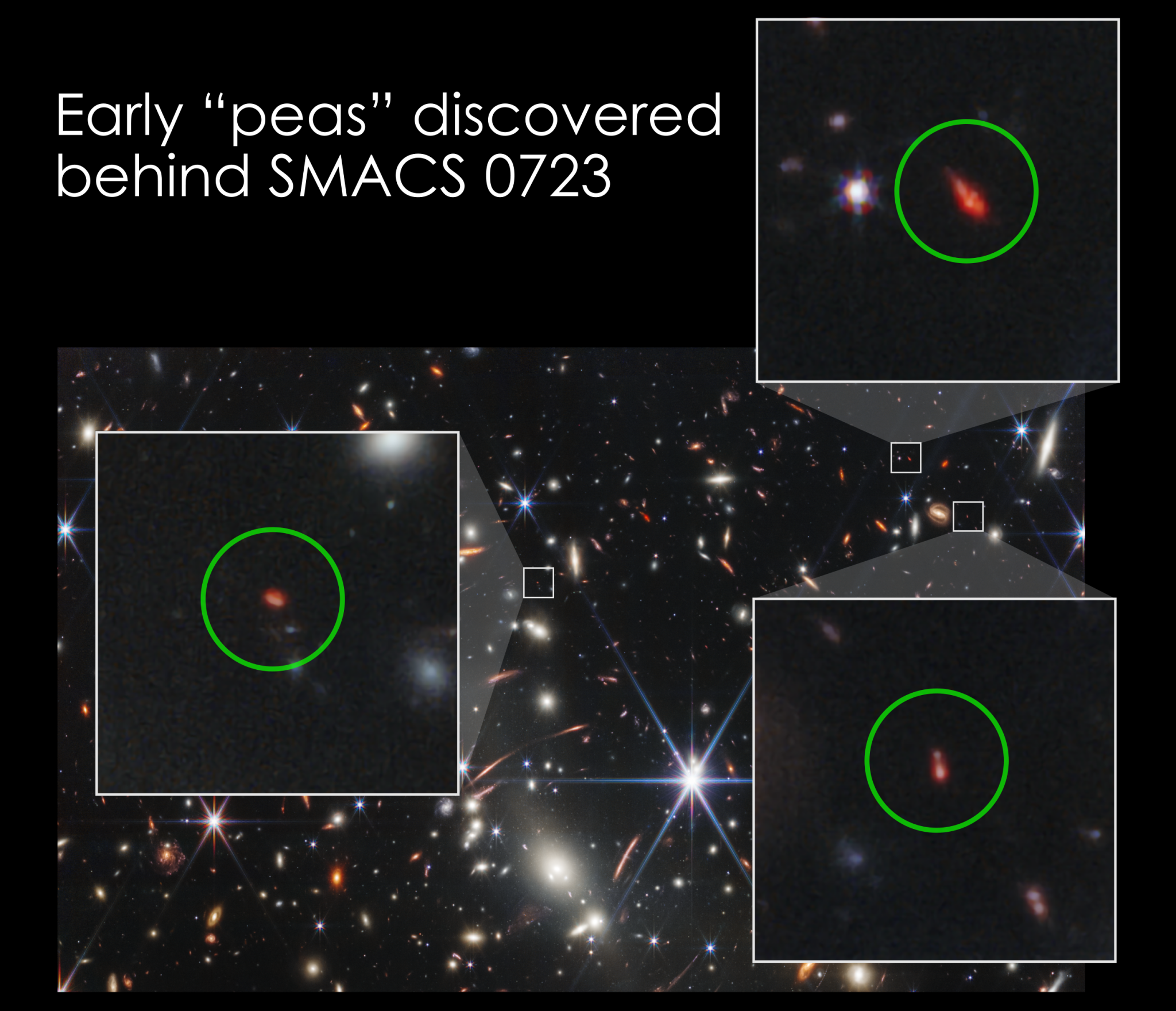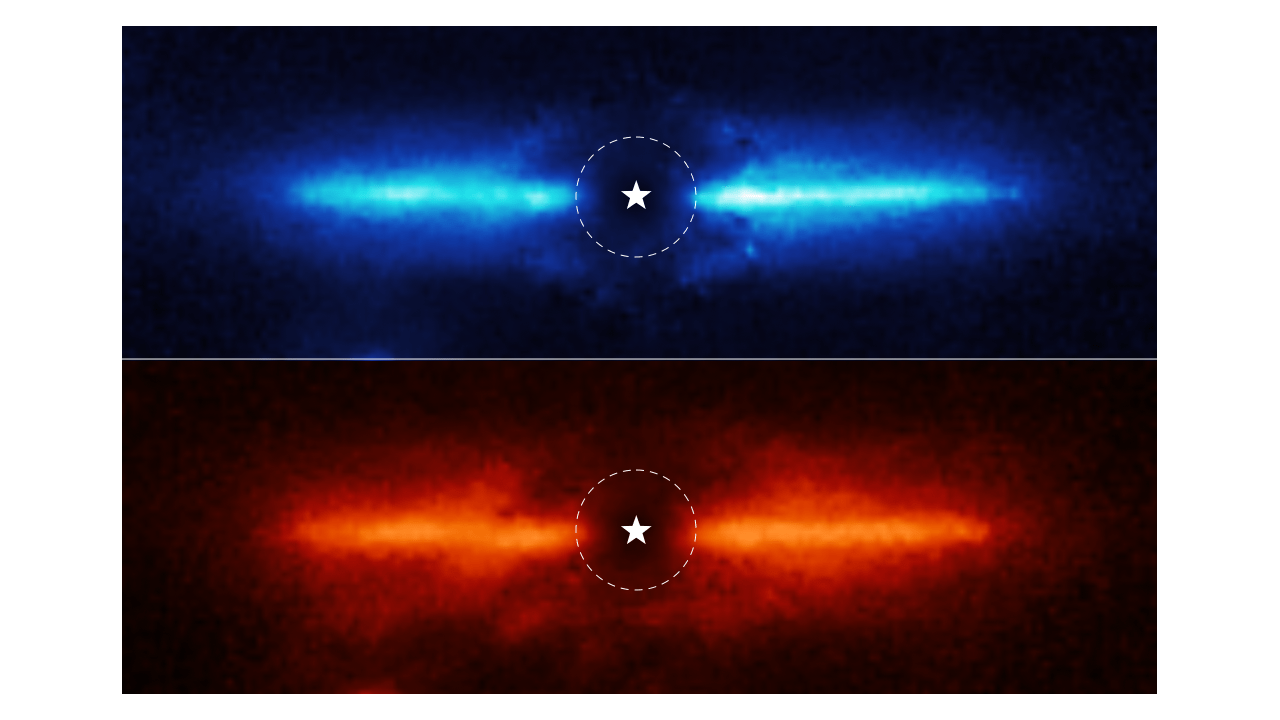Scientists shared new findings and updates from NASA’s James Webb Space Telescope, also called “Webb” or “JWST,” at press conferences during the 241st meeting of the American Astronomical Society (AAS) in Seattle, from Jan. 8 to 12.
Scientists from NASA and universities shared Webb results from multiple different scientific disciplines, ranging from the early universe and galaxy evolution to exoplanet atmospheres and young star formation.
“An Early Look at the Evolution of Galaxy Structure at z = 3-9 with JWST”
Scientists analyzed the morphologies, or visual appearance and structure, of 850 distant galaxies from observations with Webb’s Near Infrared Camera (NIRCam) instrument and compared them to their morphologies based on previous Hubble Space Telescope imaging. The term “z” denotes the redshift of the galaxies observed and is a measure of the distance of the object. As part of the Cosmic Evolution Early Release Science (CEERS) Survey, scientists conducted visual classifications of each galaxy as well as quantitative measurements of galaxy structure. Overall, the findings showed galaxies with a wide diversity of morphologies out to the highest redshifts, and many that have different morphologies than previously seen with Hubble. More here.

“Finding Peas in the Early Universe with JWST”
A new analysis of distant galaxies imaged by Webb shows that they are extremely young and share some remarkable similarities to “green peas,” a rare class of small galaxies that still exist in our cosmic backyard. Green pea galaxies appear as small, round, unresolved dots with a distinctly green shade. Researchers made connections between far-off galaxies from Webb’s First Deep Field and these nearby galaxies, which can be studied in more detail. More here.
“Zooming in on the Shocked and Turbulent Intergalactic Medium in Stephan’s Quintet with JWST and ALMA”
Shockwaves resulting from the violent collision between an intruder galaxy and Stephan’s Quintet are helping astronomers understand how turbulence influences gas in the intergalactic medium. New observations with Webb and the Atacama Large Millimeter/submillimeter Array (ALMA) revealed that a sonic boom several times the size of the Milky Way has kickstarted a recycling plant for warm and cold molecular hydrogen gas. What’s more, scientists uncovered the break-up of a giant cloud into a fog of warm gas, the possible collision of two clouds forming a splash of warm gas around them, and the formation of a new galaxy. More here.
“A Large Number of Candidate Galaxies at z ~ 11-20 Revealed by the JWST Early Release Observations”
Using data from Webb’s First Deep Field, the SMACS 0723-73 field, scientists found a total of 87 candidate galaxies at a redshift, or “z,” of greater than 11. This is the first large sample of candidate galaxies at such high redshifts. According to the researchers, such a large number of candidate objects at such high redshifts was not expected from previously favored predictions and demands further investigation. More here.
“Unveiling the Dusty Hearts of Galaxies with JWST”
Hosting an active supermassive black hole surrounded by a star-forming ring at its center, nearby Seyfert galaxy NGC 7469 presents an ideal laboratory for investigating the interplay between black hole and its host galaxy in detail. The high-resolution mid-infrared spectroscopic capability of Webb enabled not only a clear view into this phenomenon through the dusty veil, but it also, for the first time, allowed scientists to map and trace the motion of cool molecular and ionized gas species close to the active nucleus. This study revealed a highly ionized outflow driven by the central supermassive black hole in NGC 7469 that is also heating the nearby interstellar medium via shocks and destroying small dust grains, demonstrating the power of the telescope in revealing the physics of feedback processes underlying the co-evolution of black holes and galaxies. More here.

“JWST Images of a Young Planet-Hosting Debris Disk System”
Scientists shared Webb NIRCam images of the famous edge-on debris disk system AU Microscopii (or AU Mic). These images mark the first detection of the disk at these infrared wavelengths (3-4 microns), enabling new insights regarding the composition of the material in the disk. Though no planets were detected, the data is sensitive to planets as small as roughly twice Neptune’s mass – significantly constraining any yet-unseen planets that might remain. More here.
“Constraints on the Presence of a Rocky Exoplanet Atmosphere from a JWST Transmission Spectrum”
Researchers confirmed an exoplanet, a planet that orbits another star, using Webb for the first time. Formally classified as LHS 475 b, the planet is almost exactly the same size as our own, clocking in at 99% of Earth’s diameter.
The team chose to observe this target with Webb after carefully reviewing targets of interest from NASA’s Transiting Exoplanet Survey Satellite (TESS), which hinted at the planet’s existence. Webb’s Near-Infrared Spectrograph (NIRSpec) captured the planet easily and clearly with only two transit observations. More here.
“Early Imaging Results with JWST: Young Star Formation in NGC 346”
NCG 346 is located in the Small Magellanic Cloud (SMC), a dwarf galaxy close to our Milky Way. The SMC contains lower concentrations of elements heavier than hydrogen or helium, which astronomers call metals, compared to the Milky Way. Since dust grains in space are composed mostly of metals, scientists expected there would be low amounts of dust, and that it would be hard to detect. New data from Webb reveals the opposite. More here.
For more information about Webb, visit:
By Peter Sooy
NASA’s Goddard Space Flight Center, Greenbelt, Md.



























